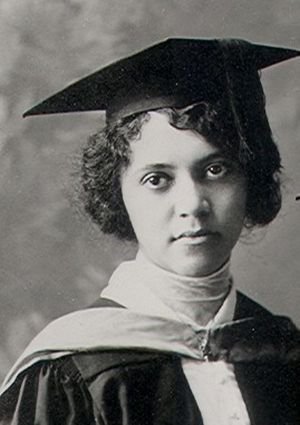
Alice Ball
Chemist (USA, 1892-1916)
Alice is best known for developing the Ball Method, the most effective treatment for leprosy in the 20th century, before antibiotics. Her discovery and hard work were stolen by one of her colleagues, who published her findings without acknowledging it. Alice´s contribution to the scientific community fell into oblivion until the 1970s.
Bio
Alice Augusta Ball was born on July 24, 1892, in Seattle (USA). Her parents were both photographers, which could have contributed to Alice´s love of chemistry. Members and advocates of the African-American community, both of her parents were listed as “white” on their birth certificate, probably to reduce the prejudice and racism their daughter would face. Alice studied chemistry at the University of Washington. Alice, alongside Williams Dehn, published the article ´Benzoylations in ether solution´ in the Journal of the American Chemical Society. This milestone was an uncommon accomplishment for a woman and especially for a black woman. After graduating, she decided to study a master´s degree in chemistry at the University of Hawaii. Her work during her master´s degree led to her study on chaulmoogra oil and its properties. At the University of Hawaii, she became the first woman and first black American to graduate with a master´s degree and was the first African-American research chemist and instructor.
During her time at the University of Hawaii, she developed what is known now as the Ball Method, the most effective treatment for leprosy in the early 20th century. Before Alice´s method, the best treatment for leprosy was chaulmoogra oil, from the seeds of the Hydnocarpus wightianus tree. The issue with this treatment was mainly the method of application, as the oil was very sticky to be used topically or as an injection, or caused the patients to vomit it up due to its acrid taste. The Ball Method consisted of making the oil injectable and absorbable by the body. Alice achieved this by isolating ester compounds from the oil and modifying them, producing a substance that retained the properties of the chaulmoogra oil and was absorbed by the body when injected. Her method was the only available and effective treatment for leprosy until the development of sulfonamide drugs.
Alice died at the age of 24 before she could publish her discovery. Her work was stolen by one of her colleagues, who published Alice´s findings without acknowledging her or crediting her work. Her contribution to the scientific community remained largely forgotten. It was not until the 1970s that Kathryn Takara and Stanley Ali, professors at the University of Hawaii, found records of Ball´s research. They tried to ensure that her work and her contribution were recognized and known by the scientific community.
